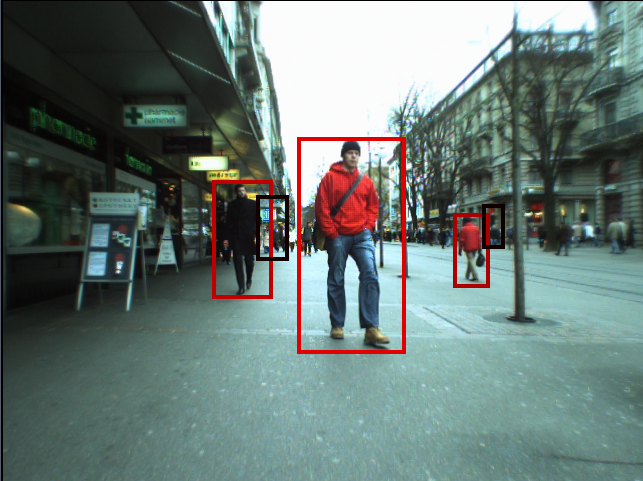The use case chosen for the Tulipp project is about pedestrian detection. It represents one of several object detection use cases interesting for automotive applications, like vehicle detection, traffic sign recognition and obstacle recognition. These are normally designed with a classifier approach, where a trained classifier sweeps the image for detections in a grid pattern. The detected objects are then normally post-processed, combining detections from several consecutive image frames, to build a verified, detected object.
The classifier type selected for the Tulipp use case is from the Viola-Jones family of classifier approaches. Classifiers based on Deep Learning are also very common for this type of tasks, but the Viola-Jones algorithm is more demanding from a memory access pattern point of view and thus more interesting as a use case.

The detection algorithm will in this type of systems operate in real time, at a frame rate of normally 30 Hz. Since the result of the detections might be need cause actions in the car, like automatic breaking, it is not only a questions of processing power but also to be able to minimize the latency for the complete processing chain.
Camera based systems for automotive applications is a rapidly growing market segment. Starting off as “nice to have” features only offered in the luxury segments, the changes lately in the EuroNCAP (and similar) safety rules will soon require this type of systems in all cars. The development towards autonomous cars will also further increase the demand for camera based systems, where vision technology will be a must.
Designing camera based systems for cars is quite challenging since several contradicting requirements normally need to be fulfilled at the same time; small size, low power, high performance and low cost. The Tulipp project is addressing these challenges by offering embedded tools, guidelines and solutions for high performance, low power image processing. The Tulipp automotive use case will give designers of similar systems a kick-start and point to solutions that can be directly applied in their designs.





